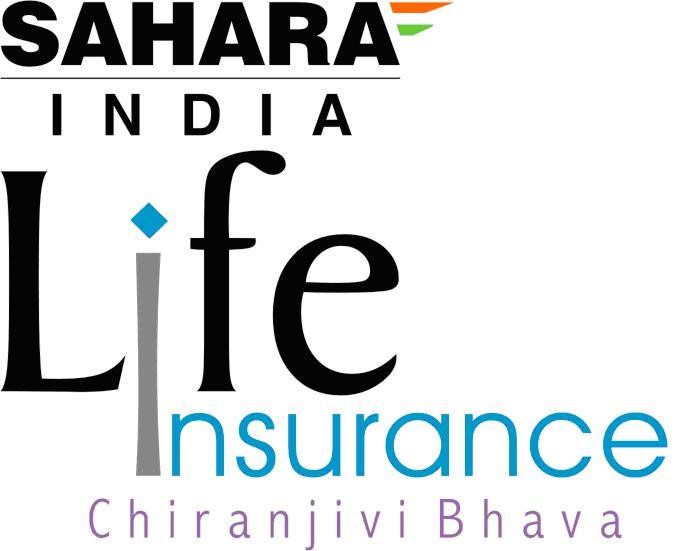TDS Rates Chart: Plan Your Investments Wisely

In a Tax Deducted at Source (TDS) system, the payer deducts tax before making payments to the receiver in a typical business environment. This unique system to lessen the burden of taxes on beneficiaries applies to various cases, such as salaries, interest, rent, and consultation fees. This system not only helps in preventing tax evasion but also simplifies tax compliance for individuals and businesses. Without a clear understanding of TDS rates, financial planning seems like a daunting task. This is where you might need a TDS rate chart that outlines key provisions under the Income Tax Act to help you make informed investment decisions.
Table of Contents
- What is TDS?
- How does TDS work?
- Importance of TDS in Investment Planning
- TDS Rates for the FY 2024-2025 (AY 2025-2026)
- Recent Changes in TDS and Implications
- TDS Rates Applicable on NRI (other than a Company)
- TDS Rate Charts for Domestic Companies
- TDS Rate Charts for Company is Not a Domestic Company
- Strategies to Optimise TDS in your Investment Portfolio
What is TDS?
According to the Income Tax Act 1961, every person or company is obligated to pay taxes when their income crosses specified limits.
The Indian tax department uses TDS as their distinct method to reduce taxpayer tax payment responsibilities. TDS stands for Taxes Deducted at Source.
How does TDS work?
In the instance of a business transaction, the payer must subtract specific taxes that represent the receiver before making the deposit to the government, and then the payment can commence.
Let’s say a freelancer is hired for a project worth Rs. 60,000.
- The client agrees to pay Rs. 20,000 as an advance and Rs. 40,000 after project completion.
Assume the applicable TDS rate is 10% under Section 194J (for professional services).
Here’s what happens:
- TDS on Rs. 20,000 advance = Rs. 2,000
- TDS on Rs. 40,000 final payment = Rs. 4,000
Total TDS = Rs. 6,000
TDS is applicable in almost all income categories, such as:
- Salaries
- Interest on fixed deposits
- Rental income Business commissions
- Consultation charges
- Lottery and rewards
- Transfer of immovable properties
Importance of TDS in Investment Planning
Tax Deducted at Source (TDS) serves as a fundamental component in investment planning because it affects money flow together with taxation obligations and produces financial returns. Investors gain clarity in financial decision-making by comprehending TDS regulations to achieve tax efficiency without regulatory noncompliance.
Systematic tax collection through TDS prevents visitors from paying all their taxes together during the financial year's conclusion. Under the provisions of fixed deposits, TDS becomes applicable to interest income that exceeds Rs. 40,000 (Rs. 50,000 for senior citizens). When there is no proper financial planning, TDS reductions impact cash flow stability and objectives requiring immediate funding.
Investors should select tax-efficient investments between PPF and tax-free bonds because these products eliminate the need for TDS deductions. The process of submitting Form 15G/15H prevents extra tax deductions from applying to people with small taxable income.
Form 26AS enables taxpayers to plan their taxes properly and claim refund deductions when tax has been deducted in excess. Integrating TDS considerations into investment approaches enables people to reach higher post-tax returns, enhances cash flow management, and maintains regulatory compliance.
TDS Rates for the FY 2024-2025 (AY 2025-2026)
Here, let's take a look at TDS rates for different types of payment.
R = Resident and NR = Non-Resident
Salary and employment benefits
|
Section |
Deductee |
Nature of transactions |
Threshold Limit |
TDS rate |
|
192 |
R, NR |
Salary payment |
Basic exemption limit of employee |
Normal slab rates |
|
192A |
R, NR |
Premature withdrawal from EPF |
50,000 |
10% |
Interest & Dividend
|
Section |
Deductee |
Nature of transactions |
Threshold Limit |
TDS rate |
|
193 |
R |
Interest on securities |
Rs. 5,000 (Debentures), Rs. 10,000 (Savings Bonds) |
10% |
|
194 |
R |
Premature withdrawal from EPF |
5,000 |
10% |
|
194A |
R |
Interest from deposits (Banks/Post Office/Co-op Society) |
Rs. 50,000 (Senior Citizens), Rs. 40,000 (Others) |
10% |
|
194A |
R |
Interest from other sources (e.g., friends, relatives) |
Rs. 5,000 |
10% |
Lottery, gaming, and betting
|
Section |
Deductee |
Nature of transactions |
Threshold Limit |
TDS rate |
|
194B |
R, NR, FC |
Lottery, card games, puzzles, etc. |
Rs. 10,000 (aggregate), |
30% |
|
194BA |
R, NR, FC |
Online income from games |
No limit |
30% |
|
19BB |
R, NR, FC |
Winning money from horse race |
Rs. 10,000 (annual) |
30% |
Contractor, brokerage, commissions
|
Section |
Deductee |
Nature of transactions |
Threshold Limit |
TDS rate |
|
194C |
R |
Payment to contractors or subcontractors |
Rs. 30,000 (single), Rs. 100,000 (aggregate), |
1% (Individuals/HUF), 2% (Others) |
|
194D |
R |
Insurance commissions |
Rs. 15,000 |
10% (companies), 5% (Others) |
|
194H |
R |
Commission/ Brokerage |
Rs. 15,000 |
5% (before Oct 1, 2024), 2% (after Oct 1, 2024) |
Rent, & property transactions
|
Section |
Deductee |
Nature of transactions |
Threshold Limit |
TDS rate |
|
194-I(a) |
R |
Rent on plant & machinery |
Rs. 2,40,000 |
2% |
|
194-I(b) |
R |
Rent on land/building/furniture |
Rs. 2,40,000 |
10% |
|
194-IA |
R |
Purchase of immovable properties (except agriculture land) |
Rs. 50,00,000 |
1% |
|
194-IB |
R |
Rent paid by individuals/HUF (not covered under 194-I) |
Rs. 50,000 per month |
5% (before Oct 1, 2024), 2% (after Oct 1, 2024) |
Professional and technical services
|
Section |
Deductee |
Nature of transactions |
Threshold Limit |
TDS rate |
|
194J |
R |
Professional fees, directors’ fees, royalties |
Rs. 30,000 |
10% |
|
194J |
R |
Fees for technical services/ call centers |
Rs. 30,000 |
2% |
Special payments
|
Section |
Deductee |
Nature of transactions |
Threshold Limit |
TDS rate |
|
194Q |
R |
Purchase of goods |
Rs. 50,00,000 |
0.10% |
|
194Q |
R |
E-commerce transactions |
Rs. 5,00,000 |
1% (before Oct 1, 2024), 0.1% (after Oct 1, 2024) |
|
194Q |
R |
Business prerequisites/ benefits |
Rs. 20,000 |
10% |
Cash withdrawals
|
Section |
Deductee |
Nature of transactions |
Threshold Limit |
TDS rate |
|
194N |
R, NR |
Cash withdrawals exceeding limit |
Rs. 1 crore (Others), Rs. 3 crore (Co-op Societies) |
2% |
|
194N |
R, NR |
If no ITR filed for last 3 years |
Rs. 20 lakh - Rs. 1 crore |
2% |
|
194N |
R, NR |
If withdrawal exceeds |
Rs. 1 crore No limit |
5% |
Payment to non-residents & foreign entities
|
Section |
Deductee |
Nature of transactions |
Threshold Limit |
TDS rate |
|
195 |
NR, FC |
Income from investments in India |
No limit |
20% |
|
195 |
NR, FC |
LTCG (115E, 112, 112A) |
No limit |
10-20% |
|
195 |
NR, FC |
STCG (111A) |
No limit |
15% |
|
195 |
NR, FC |
Royalty / Technical fees |
No limit |
20-50% |
|
195 |
NR, FC |
Any other income |
No limit |
30-40% |
Special cases
|
Section |
Deductee |
Nature of transactions |
Threshold Limit |
TDS rate |
|
206AB |
R |
Higher TDS for non-filers of ITR |
No limit |
2x standard rate |
|
206AA |
R, NR, FC |
TDS without PAN |
No limit |
Higher of standard rate or 20% |
Note:
”R” denotes Resident,
“FC” denotes Foreign company, and
“NR” denotes Non-Resident.
Recent Changes in TDS and Implications
The government introduced budgetary changes in the Union Budget 2025 to streamline Tax Deducted at Source (TDS) rules together with Tax Collected at Source (TCS) regulations. Tax authorities want to create streamlined processes that specifically benefit middle-class taxpayers who file their taxes. The government recently increased multiple TDS section thresholds because this action helps taxpayers lower their tax expenses while improving procedural efficiency.
|
Section |
Nature of payment |
Current threshold (Rs.) |
Proposed threshold (Rs.) |
|
193 |
Interest on securities |
NIL |
10,000 |
|
194A |
Interest other than securities |
(i) 50,000 (Senior Citizens) (ii) 40,000 (Others) (iii) 5,000 (Other cases) |
(i) 1,00,000 (Senior Citizens) (ii) 50,000 (Others) (iii) 10,000 (Other cases) |
|
194 |
Dividend for individual shareholders |
5,000 |
10,000 |
|
194K |
Income from mutual fund units |
5,000 |
10,000 |
|
194B & 194BB |
Winning money from lottery, crossword puzzles, & horse races |
Total exceeding 10,000 in a financial year |
10,000 per single transaction |
|
194D |
Insurance commission |
15,000 |
20,000 |
|
194G |
Commission/prize on lottery tickets |
15,000 |
20,000 |
|
194H |
Commission or brokerage |
15,000 |
20,000 |
|
194-I |
Rent |
240,000 per year |
600,000 per year |
|
194-J |
Professional/technicalal service charges |
30,000 |
50,000 |
|
194LA |
Compensation for land acquisition |
250,000 |
500,000 |
|
206C(1G) |
Remittance under LRS & overseas tour packages |
700,000 |
1,000,000 |
Note:
- TCS will no longer apply to remittances made for education if funded through loans from approved financial institutions (Section 80E).
- TCS on the purchase of goods will be removed starting April 1, 2025.
- Higher TDS rates will apply only if the taxpayer does not provide their PAN.
TDS Rates Applicable on NRI (other than a Company)
The following TDS rates apply to NRIs for various types of income.
|
Section |
Nature of Payment |
TDS Rates (%) |
|
192 |
Payment of salary |
Normal slab |
|
192A |
Premature withdrawal from EPF |
10% |
|
194B |
Winnings from lottery, card games, crossword puzzles, and other games |
30% |
|
194BB |
Winnings from horse races |
30% |
|
194E |
Payments to non-resident sportsmen, entertainers, or sports associations |
20% |
|
194EE |
Payment from National Savings Schemes (NSS) |
10% |
|
194F |
Payment due to repurchase of UTI or mutual fund units |
20% |
|
194G |
Commission on the sale of lottery tickets |
5% |
|
194LB |
Compensation for acquisition of certain immovable properties |
5% |
|
194LBA (2) |
Interest income received by a business trust from an SPV and distributed to its unitholders |
5% |
|
194LBA (2) |
Dividend income received from an SPV by a business trust and distributed to unitholders |
10% |
|
194LBA (3) |
Rental income from real estate assets owned by a business trust and distributed to unitholders |
30% |
|
194LBB |
Certain income paid by an investment fund to a unitholder |
30% |
|
194LBC |
Income from investment in a securitisation fund |
30% |
|
194LC |
Interest on a loan borrowed in foreign currency by an Indian company or business trust |
5% |
|
194LC |
Interest on long-term bonds listed in an IFSC exchange |
4% |
|
194LD |
Interest on rupee-denominated bonds paid to Foreign Institutional Investors (FIIs) or Qualified Foreign Investors (QFIs) |
5% |
|
195 |
(i) Income from investments made by NRIs (ii) Any other LTCG (iii) Interest on money borrowed by the government or Indian companies in foreign currency |
20% |
|
195 |
(i) Long-Term Capital Gains (LTCG) under Section 115E (ii) LTCG under Section 112(1)(c)(iii) (iii) LTCG under Section 112A (iv) Royalty income from copyrights or computer software (v) Royalty income from agreements related to industrial policy (vi) Income from technical fees under agreements related to industrial policy |
10% |
|
195 |
Any other income |
30% |
|
196B |
Income (including LTCG) from units of an offshore fund |
10% |
|
196C |
Income (including LTCG) from foreign currency bonds or Global Depository Receipts (GDRs) of an Indian company |
10% |
|
196D |
Income (excluding dividends and capital gains) from Foreign Institutional Investors (FIIs) |
20% |
TDS Rate Charts for Domestic Companies
The following TDS rates apply to domestic companies for various types of income and transactions.
|
Section |
Nature of Payment |
TDS Rates (%) |
|
192 |
Payment of salary |
Normal slab |
|
192A |
Premature withdrawal from EPF |
10% |
|
193 |
(i) Central or State Government securities (ii) Debentures or securities issued by local authorities or corporations (iii) Listed debentures issued by companies (iv) Interest on any other security |
|
|
194 |
Dividend Payments |
10% |
|
194A |
Interest income (other than interest on securities) |
10% |
|
194B |
Prize money from lottery, card games, crossword puzzles, and other games |
30% |
|
194BB |
Prize money from horse races |
30% |
|
194C |
(i) individuals/HUF (ii) Others |
1% 2% |
|
194D |
Insurance commissions |
10% |
|
194DA |
Payouts on life insurance policies (on income portion) |
5% |
|
194EE |
Payments from the National Savings Scheme (NSS) |
10% |
|
194F |
Payments due to repurchase of UTI or Mutual Fund units |
20% |
|
194G |
Commission on the sale of lottery tickets |
5% |
|
194H |
Commission or brokerage |
5% |
|
194-I |
Rent on Plant & Machinery |
2% |
|
194-I |
Rent on Land, Building, Furniture, or Fittings (limit increased to Rs. 2.4 lakh per year) |
10% |
|
194-IA |
Payment for the transfer of certain immovable property (except agricultural land) |
1% |
|
194-IC |
Payment under Joint Development Agreements (JDA) to Individuals/HUF |
10% |
|
194J |
(i) Professional services (ii) Director’s remuneration, fees, or commission (iii) Non-compete fees (iv) Royalty for patents, copyrights, etc. |
10% |
|
194J |
(i) Fee for technical services (ii) Royalty for cinematographic films (iii) Fee for technical services (call center business) |
2% |
|
194K |
Income from mutual funds |
10% |
|
194LA |
Compensation for the acquisition of certain immovable property |
10% |
|
194LBA(1) |
Income distributed by a business trust to its unitholders |
10% |
|
194LBB |
Certain income paid by an investment fund to its unitholders |
10% |
|
194LBC |
Income from investments in a securitisation fund |
10% |
|
194M |
Payments by Individuals/HUF exceeding Rs. 50 lakh |
5% |
|
194N |
Cash withdrawals exceeding Rs. 20 lakh but up to Rs. 1 crore (for persons not filing ITR for the last 3 years) |
2% |
|
194N |
Cash withdrawals exceeding amount exceeding Rs. 1 crore |
5% |
|
194O |
Sale of goods or services through an e-commerce operator |
1% |
|
194Q |
Payments to residents for the purchase of goods (above Rs. 50 lakh) |
0.1% |
TDS Rate Charts for Company is Not a Domestic Company
The following TDS rates apply to domestic companies for different types of income and transactions.
|
Section |
Nature of Payment |
TDS Rates (%) |
|
194B |
Winnings from lotteries, card games, crossword puzzles, and other games |
30% |
|
194BB |
Winnings from horse races |
30% |
|
194E |
Payments to non-resident sportsmen (including athletes), entertainers (not Indian citizens), or non-resident sports associations |
20% |
|
194G |
Commission on the sale of lottery tickets |
5% |
|
194LB |
Compensation on the acquisition of certain immovable property |
5% |
|
194LD |
Interest on rupee-denominated bonds to Foreign Institutional Investors (FIIs) or Qualified Foreign Investors (QFIs) |
5% |
|
194LBA(2) |
Interest income received by a business trust from an SPV and distributed to unitholders |
5% |
|
194LBA(2) |
Dividend income received from an SPV by a business trust (where it holds full share capital except required government holdings) and distributed to unitholders |
10% |
|
194LBA(3) |
Rental income from real estate assets owned by a business trust and paid to unitholders |
40% |
|
194LBB |
Income paid by an investment fund to its unitholders |
40% |
|
194LBC |
Income from investments in a securitisation fund |
40% |
|
194LC |
Interest on loans borrowed in foreign currency by an Indian company or business trust (i) Against a loan agreement or long-term bonds (ii) If the bonds are listed on a recognized stock exchange in IFSC |
5% 4% |
|
195 |
Payments of various types of income to non-residents (i) Long-Term Capital Gains (LTCG) under Section 112(1)(c)(iii) (ii) LTCG under Section 112A (iii) Short-Term Capital Gains (STCG) under Section 111A (iv) Any other LTCG (v) Interest on foreign loans borrowed by the government or Indian entities (vi) Royalty income for software/copyrights under Section 115A (vii) Royalty income from agreements related to industrial policy (signed between 1961–1976) (viii) Technical service fees under agreements related to industrial policy (signed between 1964-1976) (ix) Any other income |
10% 10% 15% 20% 20% 10% 50% 50% 40% |
|
196B |
Income (including LTCG) from units of an offshore fund |
10% |
|
196C |
Income (including LTCG) from foreign currency bonds or Global Depository Receipts (GDRs) of an Indian company |
10% |
|
196D |
Income (excluding dividends and capital gains) from Foreign Institutional Investors (FIIs) |
20% |
Strategies to Optimise TDS in your Investment Portfolio
The following discussion demonstrates tested methods for cutting down TDS reduction from investments while boosting your returns.
Submit Form 15G/15H to Avoid TDS on Fixed Deposits
Suppose you're under 60 and your total income is Rs. 2.8 lakh, including Rs. 40,000 interest from an FD. You are not liable to pay tax. However, since your interest hits the Rs. 40,000 limit, TDS of Rs. 4,000 (10%) may be deducted.
To avoid this, you can submit Form 15G to the bank, declaring that your total income is below the taxable limit. The bank won’t deduct TDS.
Invest in Tax-Free Instruments to Avoid TDS
Some investments don’t just grow your wealth—they do it without tax deductions:
- PPF: Returns and withdrawals are fully tax-free.
- Tax-Free Bonds: Earn interest without worrying about TDS or tax.
- ULIPs: Gains are tax-free if your annual premium is below Rs. 2.5 lakh and you stay invested for at least 5 years.
Example: If you invest Rs. 5 lakh in tax-free bonds with 7% annual returns, you earn Rs. 35,000, with zero TDS and no tax liability.
Split Your FDs to Avoid TDS
Banks deduct TDS if your annual FD interest exceeds Rs. 40,000 (Rs. 50,000 for seniors). To avoid this:
- Spread your FDs across different banks to keep interest under the limit.
- Consider gifting money to a parent or adult child (in a lower tax bracket) who can invest separately.
Example: Rs. 6 lakh FD in one bank earns Rs. 42,000 interest = TDS deducted. But two Rs. 3 lakh FDs in separate banks earning Rs. 21,000 each = no TDS!
Choose Growth Option Over Dividend in Mutual Funds
Dividends attract 10% TDS before being credited to your account. On the other hand, the growth option allows your money to grow without periodic tax deductions.
Example: If a mutual fund gives Rs. 10,000 dividends, you get Rs. 9,000 after 10% TDS. But in a growth plan, the full Rs. 10,000 remains invested, which will compound your returns.
Investors who succeed with their assets minimize unnecessary tax deductions through TDS while selecting options that provide maximum tax efficiency. Knowledge about the workings of TDS gives you the ability to create better financial plans with the power to reduce taxes while optimizing your earnings.





























